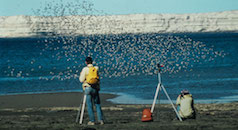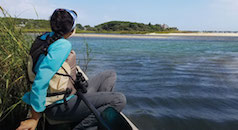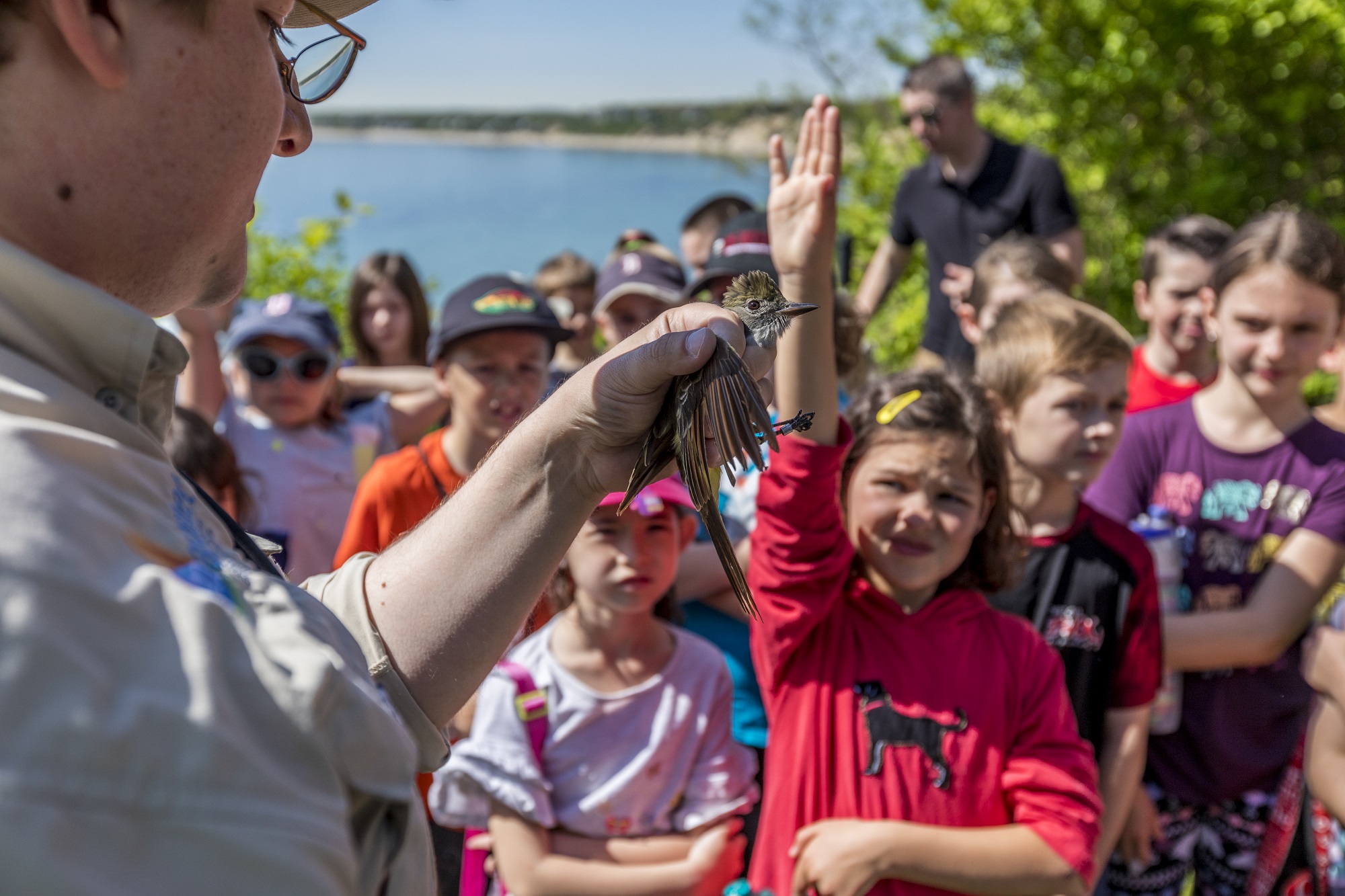Search Results

Population estimates of shorebirds on the Atlantic Coast of southern South America generated from large-scale, simultaneous, volunteer-led surveys
Faria, F., J. Aldabe, J. Bosi de Almeida, J. J. Bonanno, L. Bugoni, R. P. Clay, J. Garcia-Walther, A. Gonzalex, A. J. Lesterhuis, G. Tavares Nunes, and N. R, Senner. 2025. Population estimates of shorebirds on the Atlantic Coast of southern South America generated from large-scale, simultaneous, volunteer-led surveys. Journal of Field Ornithology. https://doi.org/10.5751/JFO-00584-960102 Skip to content Current Issue About the Journal Submit an Article Sign In Population estimates of shorebirds on the Atlantic Coast of southern South America generated from large-scale, simultaneous, volunteer-led surveys >Details Citation Outline Keywords Article Metrics Copyright and Permissions Avian Conservation and Management ABSTRACT Population abundance and trend estimates are crucial to science, management, and conservation. Shorebirds, which are abundant in many coastal...
Observations, perceptions and concerns of the American lobster industry regarding the range-expansion of Black Sea Bass
Observations, perceptions and concerns of the American lobster industry regarding the range-expansion of Black Sea Bass Helen Cheng a,*, Marissa D. McMahan b, Steven B. Scyphers c, Loren McClenachan d, Jonathan H. Grabowski a a Northeastern University Marine Science Center, 430 Nahant Road, Nahant, MA 01908, USA b Manomet Inc., Fisheries Division, 14 Maine Street, Suite 410, Brunswick, ME 04011, USA c University of South Alabama Dauphin Island Sea Lab, 101 Bienville Blvd., Mobile, AL 36528, USA d University of Victoria, Department of History and School of Environmental Studies, Victoria, British Columbia, Canada A R T I C L E I N F O Keywords: American lobster Black Sea Bass Range-expansion Fisher ecological knowledge Perceptions Decision tree analyses A B...
Shorebirds of the Atlantic Flyway | Bluedor Living
Setting the stage for conservation on a hemispheric scale. If you visit a beach at low tide in the spring or fall, there’s a good chance you’ll encounter a unique group of transients, wheeling about and landing in sync, probing with bills of fantastical shapes in the invertebrate-packed mud, or resting, beak under feather, in moments of calm. These visitors, a few of whom stay to breed at our mid-latitudes in the summer, are the shorebirds, a diverse group that includes sandpipers, plovers, and oystercatchers. The writer Peter Matthiessen called them “the wind birds” for their legendary migrations. Every shorebird you see is vitally connected to a flyway, an aerial artery that surges twice a year as thousands of birds...
The State of the Birds on Cape Cod
The State of the Birds on Cape Cod Shorebirds and saltmarsh sparrows are among those at a tipping point By William von Herff Apr 2, 2025 WELLFLEET — A new report on research by leading bird conservation scientists, published by Cornell University, confirms that North American bird populations are continuing a steep decline. The North American Bird Conservation Initiative’s State of the Birds 2025 report, released on March 13, reinforces the conclusions of a 2019 study in Science that found there are 3 billion fewer North American birds than there were in 1970. The NABCI report outlines a list of “tipping point” species whose populations have declined by 50 percent since 1970 and includes shorebirds that feed on Outer Cape Cod before their long...
Oystercatcher Recovery Campaign Offers a Rare Success Story about Shorebird Conservation
A coalition of nonprofit and government agencies have found ways to protect and increase the American oystercatcher population. By Jon Hurdle March 20, 2025 The population of oystercatchers grew by 45 percent from 2008 to 2023, bringing the total population to an estimated 14,735 birds. Credit: Shiloh Schulte/Manomet Conservation Sciences Related California Rice Fields Offer Threatened Migratory Waterbirds a Lifeline Hope for North America’s Most Endangered Bird How a Tiny Inland Shorebird Could Help Save the Great Salt Lake Share this article Republish Most Popular EPA Considers Giving Oil and Gas Companies More ‘Flexibility’ to Dispose of Highly Toxic Wastewater Treating Texas’ Oilfield Wastewater Could Require More Energy Than Most U.S. States Is FERC’s Future at Stake in its Titanic Clash...
2025 U.S. State of the Birds Report Highlights Urgent Need for Conservation Action
Contact: Dorie Klissas | [email protected] | 9172875643 Manomet Conservation Sciences Shiloh Schulte Available to Comment on Recovery of American Oystercatcher Due to Concerted Conservation Efforts Plymouth, Massachusetts – The 2025 U.S. State of the Birds report, unveiled at the 90th annual North American Wildlife and Natural Resources Conference in Louisville, Kentucky, underscores the alarming decline of American bird populations, with 229 species now requiring urgent conservation action. Building on a 2019 study documenting a net loss of 3 billion birds in North America over the past 50 years, the latest report confirms that these declines persist. The most significant losses have been recorded for grassland birds (-43% since 1970), aridland birds (-41% since 1970), and shorebirds (-33% since 1980). Scientists...
With Renaming Of National Wildlife Refuge, Manomet Conservation Sciences Underscores the Value of Migratory Bird Habitats Across the Americas
Plymouth, Massachusetts: March 6, 2026: Manomet Conservation Sciences (Manomet) recognizes the importance of the Anahuac National Wildlife Refuge, near Galveston, Texas, as a critical habitat for migratory birds and other wildlife. Recently renamed the Jocelyn Nungaray National Wildlife Refuge by an Executive Order from President Donald Trump in honor of a young nature enthusiast who loved animals and tragically lost her life in 2024, the refuge serves as a vital sanctuary for many species, particularly migratory birds such as the Whimbrel. These birds depend on rich feeding grounds and protected spaces to sustain their long migratory journeys between North and South America. In 2005, the Jocelyn Nungaray Refuge was designated a site of national importance within the Western Hemisphere Shorebird...
Purple Sandpiper Cape Ann Bird Walk
Join Manomet staff on a trip along the rocky coastline of Cape Ann, one of the premier destinations in the Northeast for winter birding. Our primary focus will be visiting the most reliable sites for the Purple Sandpiper, a species of conservation concern in our region. In addition, we will see a variety of ducks, loons, alcids, and grebes! This walk will be led by Alan Kneidel, Manomet's Senior Conservation Biologist, as he talks about Manomet's work with Purple Sandpiper conservation. For those interested after the walk, the group will go out to lunch for an opportunity to chat further! Registration is required. Did you know Manomet is a non-profit organization that depends on the generosity of people like you?...
American Oystercatcher Population Rebounds 45% Through Conservation: A decade of science-driven efforts helped restore this vital shorebird
A decade of science-driven efforts helped restore this vital shorebird. Shorebird populations across the Americas have declined by nearly 50% over the past four decades, facing increasing threats from habitat loss, climate change, and human disturbances. Against these odds, the American Oystercatcher has made a stunning comeback, with populations rebounding by 45% since 2008. The recovery is credited to a collaborative, science-based conservation initiative led by Manomet Conservation Sciences, in partnership with the National Fish and Wildlife Foundation and the U.S. Fish and Wildlife Service. The American Oystercatcher, a striking coastal bird known for its bright red-orange beak and distinctive yellow-rimmed eyes, plays a vital role in salt marsh and barrier beach ecosystems. By 2008, its numbers had dropped to just 10,000 birds....
Running the Gauntlet – The Journey of Juvenile Whimbrel on Cape Cod
Water, Water, Everywhere... It was the third straight day of lashing rain, stuck in the middle of a coastal storm that would end up dropping 10 inches on outer Cape Cod. But this was no office day for the Whimbrel crew – Shiloh (Dr. Shiloh Schulte, Manomet’s Senior Shorebird Scientist) sat crouched behind a propped-up rowboat, an unsteady yet effective windbreak as he peered over occasionally to check the nearby noose carpet array. Liana (Liana DiNunzio, Shorebird Biologist) sat huddled among the dune vegetation, vigilantly monitoring the more distant traps. Meanwhile, I strode ponderously through hip-deep water in the flooded marsh behind the sand ridge, the water rising rapidly as the king tide approached. Time was running out, the water...



